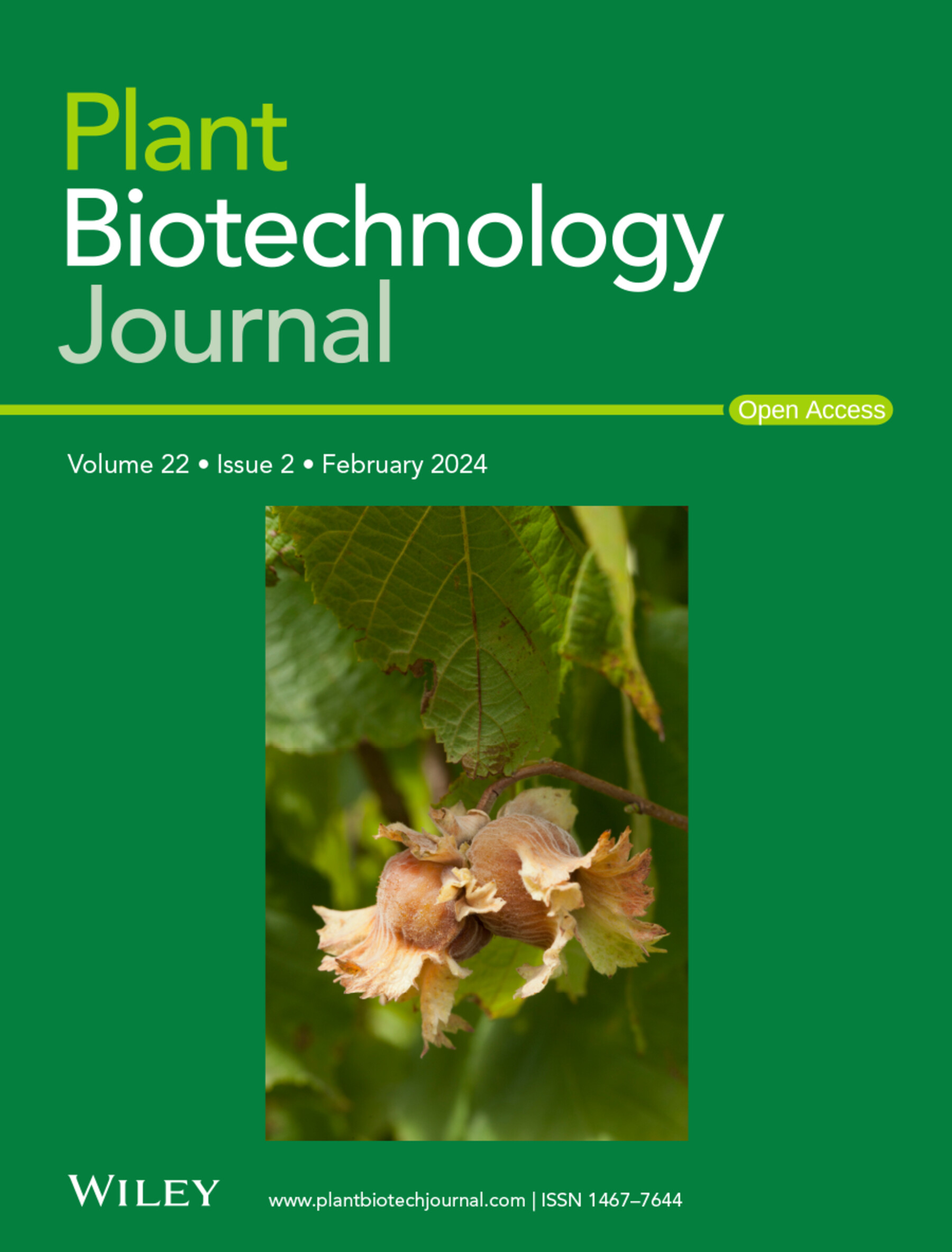Host-induced gene silencing of the amino acid biosynthesis gene acetolactate synthase of Phytophthora infestans caused strong enhanced late blight resistance of potato in the field
IF 10.1
1区 生物学
Q1 BIOTECHNOLOGY & APPLIED MICROBIOLOGY
引用次数: 0
Abstract
Late blight caused by Phytophthora infestans is the most serious disease of potatoes. Here we present the effectiveness of the host-induced gene silencing (HIGS) technology against an amino acid biosynthesis gene of the pathogen to increase the resistance against the plant-infecting oomycete in the field. A RNAi hairpin construct directed against the acetolactate synthase (ALS) gene of Phytophthora infestans was transferred into potato. HIGS-ALS potato lines displayed efficient target gene silencing revealed by a luciferase reporter gene assay. Plant-derived siRNAs targeting the oomycete's ALS gene were detected by small RNA sequencing. ALS gene expression of P. infestans was reduced during the early infection stages of HIGS-ALS potatoes, as shown by qRT-PCR. HIGS-ALS plants revealed an enhanced late blight resistance in detached leaf assays. ALS gene silencing also conferred strong enhanced late blight resistance to the HIGS lines in trials under near-field conditions in Europe and in field trials in the USA against European and US P. infestans isolates, respectively. These results demonstrated the value of the HIGS technology for the development of a new quantitative resistance source for potato against Phytophthora infestans.寄主诱导马铃薯晚疫病菌氨基酸合成基因乙酰乳酸合酶基因沉默,使马铃薯田间抗晚疫病能力显著增强
马铃薯晚疫病是马铃薯最严重的病害。本文介绍了宿主诱导基因沉默(HIGS)技术对病原菌氨基酸生物合成基因的抑制作用,以提高田间对植物侵染卵菌的抗性。将一种针对疫霉乙酰乳酸合酶(ALS)基因的RNAi发夹构建物转移到马铃薯中。通过荧光素酶报告基因检测,HIGS-ALS马铃薯株系显示出有效的靶基因沉默。通过小RNA测序检测了针对卵菌ALS基因的植物源sirna。qRT-PCR结果显示,在HIGS-ALS马铃薯感染早期,感染病原菌的ALS基因表达降低。HIGS-ALS植株离体叶片抗晚疫病能力增强。在欧洲近场条件下和美国针对欧洲和美国病原菌分离株的田间试验中,ALS基因沉默也分别增强了HIGS品系对晚疫病的抗性。这些结果证明了HIGS技术对马铃薯疫霉定量抗性新来源的开发价值。
本文章由计算机程序翻译,如有差异,请以英文原文为准。
求助全文
约1分钟内获得全文
求助全文
来源期刊

Plant Biotechnology Journal
生物-生物工程与应用微生物
CiteScore
20.50
自引率
2.90%
发文量
201
审稿时长
1 months
期刊介绍:
Plant Biotechnology Journal aspires to publish original research and insightful reviews of high impact, authored by prominent researchers in applied plant science. The journal places a special emphasis on molecular plant sciences and their practical applications through plant biotechnology. Our goal is to establish a platform for showcasing significant advances in the field, encompassing curiosity-driven studies with potential applications, strategic research in plant biotechnology, scientific analysis of crucial issues for the beneficial utilization of plant sciences, and assessments of the performance of plant biotechnology products in practical applications.
 求助内容:
求助内容: 应助结果提醒方式:
应助结果提醒方式:


